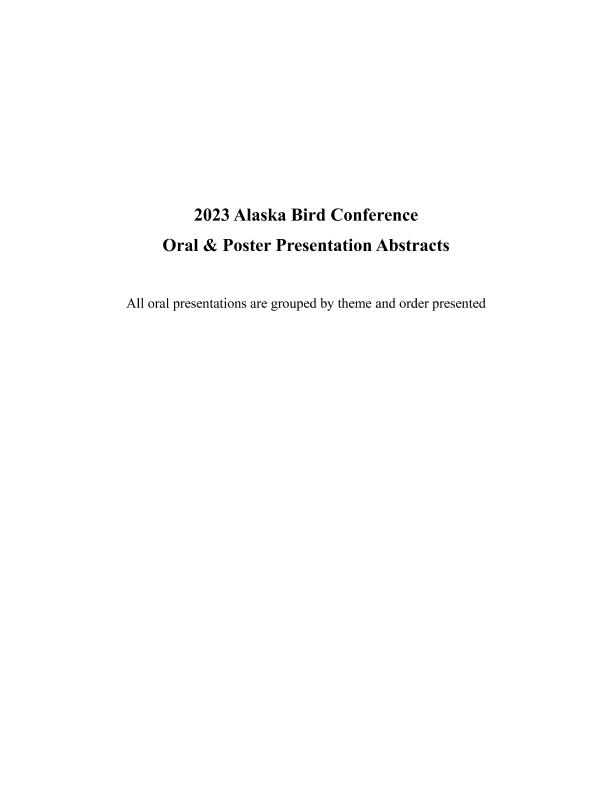Evento
Epizootic of beak deformities in wild birds: a review of avian keratin disorder worldwide
Gerik, Daniel; Van Hemert, Caroline; Handel, Collen; Lawson, Becki; Walters, Jeff; Brust, Kerry; Prinz, Anna; Van Lanen, Andy; Schillaci, Jessie; Cottrell, Susan; Anderson, Clifford; Gorosito, Cristian Andrés ; Cueto, Víctor
; Cueto, Víctor ; Zylberberg, Maxine
; Zylberberg, Maxine
 ; Cueto, Víctor
; Cueto, Víctor ; Zylberberg, Maxine
; Zylberberg, Maxine
Tipo del evento:
Conferencia
Nombre del evento:
20th Alaska Bird Conference
Fecha del evento:
11/12/2023
Institución Organizadora:
US Fish and Wildlife Service's Migratory Bird Management Division;
Título del Libro:
Alaska Bird Conference: Oral & Poster Presentation Abstracts
Editorial:
US Fish and Wildlife Service's Migratory Bird Management Division
Idioma:
Inglés
Clasificación temática:
Resumen
An epizootic of debilitating beak deformities in wild birds has been documented in recent decades. Avian keratin disorder (AKD) is characterized by overgrowth of beak keratin and was first observed in clusters among Black-capped Chickadees (Poecile atricapillus) in Alaska. The prevalence of beak deformities is higher among Black-capped Chickadees and American Crows (Corvus brachyrhynchos) in Alaska than in any other population ever recorded. Reports of birds with similar beak deformities have also been documented across North America, in South America, and in Europe. We compiled reports from community-science programs, bird monitoring studies, and scientific literature to summarize the current geographic scope and bird species affected by AKD-like beak deformities. From 1946 to 2021, >3,300 community-science observers reported 290 species with beak deformities, comprising >4,000 birds in Alaska, 1,900 elsewhere in North America, and >1,700 from outside of North America. We also examined the occurrence of beak deformities in populations of Red-tailed Hawks (Buteo jamaicensis) in the Pacific Northwest, Red-cockaded Woodpeckers (Dryobates borealis) in North Carolina, and Austral Thrushes (Turdus falcklandii) in Patagonia. Clinical signs of AKD in Black-capped Chickadees have been strongly associated with the occurrence of a novel picornavirus, which has now been detected in multiple species exhibiting morphologically similar beak deformities. Our detailed compilation, including geographic occurrence of individuals and species apparently affected, will help identify research and conservation actions required to evaluate and mitigate impacts of beak deformities on wild birds.
Palabras clave:
AVIAN KERATIN DISORDER
,
BEAK DEFORMITIES
,
POECIVIRUS
Archivos asociados
Licencia
Identificadores
Colecciones
Eventos(CIEMEP)
Eventos de CENTRO DE INVESTIGACION ESQUEL DE MONTAÑA Y ESTEPA PATAGONICA
Eventos de CENTRO DE INVESTIGACION ESQUEL DE MONTAÑA Y ESTEPA PATAGONICA
Citación
Epizootic of beak deformities in wild birds: a review of avian keratin disorder worldwide; 20th Alaska Bird Conference; Anchorage; Estados Unidos; 2023; 34-35
Compartir



